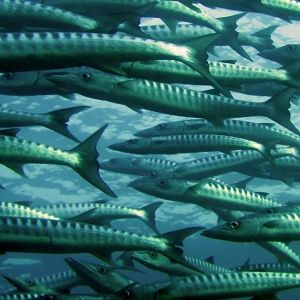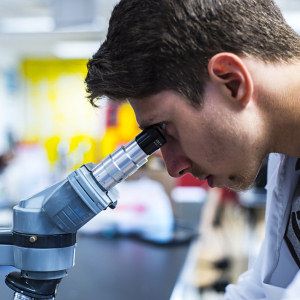Xunzhong Zhang and E.H. Ervin, Dep. of Crop and Soil Envi- ronmental Sciences, Virginia Polytechnic Institute and State Univ., Blacksburg, VA 24061. Received 10 May 2007. *Corresponding author (Ervin@vt.edu).
ABSTRACT
Heat stress is the primary factor limiting summer performance of creeping bentgrass (Agrostis stolonifera L.) in many temperate to subtropical regions. Seaweed extract (SWE)-based cytokinins have been used to improve stress tolerance, but their specific effects on creeping bentgrass under supraoptimal temperatures are lacking. This study was designed to determine whether SWE-based cytokinins affect creeping bentgrass heat tolerance, and to compare effects of SWE-based cytokinins to those of a trans-zeatin riboside (t-ZR)-standard. Concen- trations of t-ZR in two SWE sources (referred to as Oce and Aca) were determined. Treatments were applied twice to creeping bentgrass at an equivalent t-ZR concentration of 10 μM. One week after the initial treatment, heat stress was imposed (35/25°C [day/night]) for 42 d. The Oce SWE, Aca SWE, and t-ZR treatments resulted in leaf t-ZR concentrations that were 39, 32, and 28% higher, respectively, relative to the control at 14 d of heat stress. The Oce SWE, Aca SWE, and t-ZR treatments also increased superoxide dismutase activity and alleviated the decline of turfgrass quality, photochemical efficiency, and root viability. Ashed SWE provided results similar to the water control. Beneficial effects of SWE on heat tolerance appear to be associated with their organic, especially cytokinin, components and not the mineral (ashed) fraction. Proper application of SWE-based cytokinins may be an effective approach to improve summer performance of creeping bentgrass.
Abbreviations: 6-BA, 6-benzyladenine; BSA, bovine serum albumin; ELISA, enzyme-linked immunosorbent assay; MDA, malondialdehyde; PBS, phosphate-buffered saline; PEc, canopy photochemical efficiency; ROS, reactive oxygen species; SOD, superoxide dismutase; SWE, sea- weed extract; TTC, 2,3,5-triphenyltetrazolium chloride; t-ZR, trans- zeatin riboside.
Creeping bentgrass (Agrostis stolonifera L.) is a primary cool season turfgrass species used on close-cut golf course greens, tees, and fairways. Creeping bentgrass was originally adapted to cool-humid climates, but is increasingly utilized in subtropical regions for golf course putting greens (Beard, 1973). Although heat tolerance has been improved in new cultivars, it is still often the primary factor limiting summer performance of creeping bentgrass (Fry and Huang, 2004; McCarty, 2005).
It has been documented that environmental stresses damage cells via oxidative injury. Heat stress may decrease leaf photo- synthetic rate and carbohydrate reserves (Xu and Huang, 2000). As Calvin cycle activity and photosynthetic electron transport efficiency are reduced by environmental stresses, excess energy may be diverted to oxygen molecules, resulting in over-produc- tion of toxic reactive oxygen species (ROS; Zhang and Schmidt, 1997). Reactive oxygen species damage many cell components such as lipids, proteins, and nucleic acids (Smirnoff, 1995). Plant antioxidant enzymes [such as superoxide dismutase (SOD)] and other metabolites protect plant cells by scavenging ROS. Heat stress tolerance of cool season grasses has been found to be associated with antioxidant activity (Huang et al., 2001; Fry and Huang, 2004).
High soil temperature is the primary factor leading to turfgrass decline during summer months (Xu and Huang, 2000). High soil temperature may damage roots, a primary site of cytokinin biosynthesis. Extensive research has identified cytokinins as a class of very effective antisenescence growth regulators (Woo et al., 2002). Cytokinins exhibit antisenescence properties that are related to their antioxidant activity (Musgrave, 1994; Zhang and Ervin, 2004). The repression of lipoxygenase by cytokinins also contributes to their overall antisenescence functions (Strivastava, 2002). Thimann (1987) found that cytokinins delay senescence processes probably by maintaining the integrity of the tonoplast membrane.
Goatley and Schmidt (1990) reported that foliar appli- cation of 6-benzyladenine (6-BA) delayed senescence of Kentucky bluegrass. Liu et al. (2002) noted that root- zone-injection of zeatin riboside increased endogenous cytokinins, antioxidant activity, and delayed senescence in heat-stressed creeping bentgrass. Exogenous 6-BA also increased root cytokinin level (Wang et al., 2003) and leaf total nonstructural carbohydrate concentration (Wang et al., 2006) in creeping bentgrass under heat stress.
Seaweed [Ascophyllum nodosum (L.) Le Jolis] extract (SWE) has been shown to contain biologically active con- centrations of natural cytokinins such as trans-zeatin ribo- side (t-ZR) and isopentenyl-adenine (Senn, 1987; Zhang and Schmidt, 1999; Zhang and Ervin, 2004). Foliar application of SWE has been shown to increase leaf cytokinin content and antioxidant activity, while reducing lipid peroxidation and delaying senescence of creeping bentgrass under drought stress (Zhang and Schmidt, 1999, 2000; Zhang and Ervin, 2004). Seaweed extract treatments have also been reported to increase turfgrass tolerance to salinity (Nabati et al., 1994) and ultraviolet B irradiation stress (Ervin et al., 2004). Zhang et al. (2003a) noted that applying SWE plus humic acid to Kentucky bluegrass 1 wk before sod harvest increased canopy photochemical efficiency (PEc) and recovery from postharvest heat injury.
Although it has been documented that this source of SWE contains cytokinins and has a positive impact on stress tolerance in turfgrasses, no research has reported on effects of differentially extracted sources of seaweed on leaf cytokinin levels and heat tolerance of turfgrasses. Furthermore, no research is available regarding relative contributions of organic (particularly cytokinins) and inorganic fractions (ash or mineral residues) in the SWE on turfgrass performance under heat stress. Therefore, this study was designed to quantify the amount of t-ZR in two differentially extracted seaweed sources, determine whether these SWEs affect creeping bentgrass physiological responses to supraoptimal temperature, and to compare effects of SWE-based t-ZR to those of a pure zeatin riboside and an ashed SWE.
MATERIALS AND METHODS
Plant Culture and Cytokinin Treatment
This experiment was conducted in 2005 and repeated in 2006. ‘L-93’ creeping bentgrass was planted in conetainers (3.8-cm diameter, 21-cm depth; Stuewe and Sons, Inc., Corvallis, OR) filled with calcined clay in November 2004 and 2005 and grown under a greenhouse bench mist system with photosynthetically active radiation at 350 μmol m-2 s-1 (at 1400 h) and 24/20°C (day/night). The grass was fertilized with 0.5 g N m-2 (Nutriculture 20–20–20 with micronutrients; Plant Marvel, Chicago, IL) weekly and clipped at 9.5 mm.
Three months after planting, the grass received initial SWE and t-ZR treatments. Treatments included: (i) control (water); (ii) Acadian seaplants liquid extract (Aca SWE) containing 10 μM t-ZR; (iii) Ocean Organics liquid SWE (Oce WSE) containing 10 μM t-ZR; (iv) zeatin riboside (t-ZR) at 10 μM; and (iv) ashed Ocean Organics liquid SWE; mineral residues were mixed in water and applied (ashed control). The Aca SWE was supplied by Acadian Seaplants Inc. (Dartmouth, NS, Canada). It is a KOH-extracted liquid SWE concentrate with 14.4% solids. The Oce SWE, from Ocean Organics (Waldoboro, ME), is a KOH-extracted liquid SWE concentrate with 8% solids. The t-ZR standard was from Sigma (St. Louis, MO). The t-ZR concentration in the two sources of SWE was determined using indirect enzyme-linked immunosorbent assay (ELISA) method as described subsequently. The SWE concentrates were diluted with water to obtain treatment solutions containing 10 μM t- ZR. The same amount of Oce SWE was ashed at 500°C for 8 h, mineral residues were dissolved in water, and the solution was used for the treatment. Synthetic cytokinin (t-ZR) was dissolved in trace methanol, and then diluted with water, supplemented with 0.05% Tween 20. The SWE and t-ZR treatments were evenly applied to creeping bentgrass foliage with a sprayer delivering 784 L ha-1 at 290 kPa.
One week after initial treatment, grasses were transferred into a growth chamber with temperature of 35/25°C (day/ night), photosynthetically active radiation at 300 μmol s-1 m-2 with a 14-h photoperiod. The containers were placed in plastic trays filled with one-quarter strength Hoagland’s solution that was replaced weekly. Two weeks after heat stress initiation, treatments were re-applied. A total of 100 containers were arranged in a completely randomized design in the growth chamber with four replications in space and four container subsamples per treatment in time. This design allowed for the destructive sampling of four containers per treatment at 0, 14, 28, and 42 d of heat stress exposure.
Measurements
At 0, 14, 28, and 42 d after initiation of heat stress, turfgrass quality and canopy PEc were measured. Conetainer subsamples were then removed from the growth chamber and destructively sampled; the collected leaf tissues were immediately frozen with liquid N and stored at −80°C for analysis of t-ZR, SOD activity, and lipid peroxidation. Roots were separated, washed, weighed, and then tested for root viability.
Turfgrass Quality and Canopy PEc
Turfgrass visual quality was rated based on a scale of 1 to 9, with 1 indicating complete death, 9 the best possible quality, and 6 minimum commercial acceptability. Canopy photochemical efficiency was measured with a chlorophyll fluorometer OS- 50II (Opti-Sciences, Tynsboro, MA) according to the methods of Zhang et al. (2003a).
Leaf t-ZR
Frozen leaf tissues (500 mg) collected from each container were used for t-ZR assay with indirect ELISA. Zeatin riboside was extracted and purified following the methods of Turnbull et al. (1997), with minor modifications (Zhang and Ervin, 2004). A recovery rate greater than 90% was obtained based on the internal standards.
Zeatin riboside was analyzed using indirect ELISA as described by Trione et al. (1985) with modifications (Zhang and Ervin, 2004). Briefly, wells of a 96-unit plate were coated with 100 μL per well of t-ZR conjugated to bovine serum albumin (BSA) (1:2000 dilution), incubated overnight at 5°C, emptied, and washed three times with phosphate-buffered saline (PBS)-Tween (PBS containing 0.05% Tween 20). The reaction was “blocked” with 200 μL of 1% BSA in PBS (37°C, 30 min) to prevent non-specific protein adsorption. After the plate was washed twice with PBS-Tween, 50 μL of the cytokinin extracts or standards and 50 μL of the antibody t-ZR3 (1:200 dilution) were added to the wells and the plates were incubated at 37°C for 60 min, emptied, and washed three times with PBS-Tween. The A and B rows in the plate were used to develop a standard curve. A series of t-ZR concentrations (0, 2.5, 5, 10, 25, 50 ng mL-1) were made from the stock solution. Appropriate dilutions were prepared for the SWE samples. Each standard or sample was repeated three times and the averages were used for data analysis.
To each well, 100 μL of a 1:1000 dilution of alkaline phos- phatase–labeled goat anti-mouse IgG (Sigma Chemical Co., St. Louis, MO) was added and the plates were incubated at 37°C for 60 min. After three washes with PBS-Tween, 100 μL of substrate solution (3 mg mL-1 of p-nitrophenyl phosphate in 10% diethanolamine buffer, pH 9.8, 0.5 mM MgCl2) was added to each well and the plates were incubated at 37°C for 50 min. The color reactions in each well were determined by measuring absorbance at 405 nm by an enzyme immunoassay micro- plate reader (Opsys MR, Thermo Labsystems, Chantilly, VA). Zeatin riboside concentration was calculated based on the standard curve after logic conversion of the data.
Leaf SOD Activity
The SOD in leaf tissue (100 mg fresh weight) was extracted according to Zhang et al. (2005) and determined according to the method of Banowetz et al. (2004). Briefly, to each well 125 μL reaction solution containing 50 mM Pipes buffers (pH 7.5), 0.4 mM o-dia- nisidine, 0.5 mM diethylenetriaminepentaacetic acid, and 26 μM riboflavin, and then 20 μL enzyme extract was added. Absorbance at 560 nm of solution mixture was read immediately after addition of enzyme extract on a microplate reader (Opsys MR). The reaction was initiated by switching on a circular fluorescent light (irradiance = 60 μmol m-2 s-1) and slowly rotating sample tubes under the light for 30 min at room temperature (25°C). Absorbance at 560 nm was measured again. Superoxide dismutase activity was calculated based on changes in absorbance and from the standard curve. Since SOD is presented on a protein basis, protein concentration for each sample was analyzed by the bicinchoninic method, with BSA serving as the standard (Smith, 1985).
Leaf Lipid Peroxidation
Lipid peroxidation in leaf samples was measured in terms of malondialdehyde (MDA) concentration which was determined according to Heath and Packer (1968) with some modifications. Briefly, fresh sample (100 mg) was homogenized in 5 mL 0.25% 2-thiobarbituric acid in 10% trichloroacetic acid using mortar and pestle. The homogenate was heated at 95°C for 30 min and the mixture was quickly cooled down in an ice bath, and then centrifuged at 10,000 g for 10 min. The absorbance of the supernatants was measured at 532 nm and 600 nm. The value for the nonspecific absorbance at 600 nm was subtracted from the readings at 532 nm. The blank was 0.25% 2-thiobarbituric acid in 10% trichloroacetic acid. The concentration of the MDA was calculated using MDA’s extinction coefficient at 155 mm-1 cm-1 and expressed as nanomoles per gram fresh weight.
Root Viability
Root viability was measured according to the procedure of Comas et al. (2000). Fresh roots (200 mg) were cleaned with distilled water, cut into 1-cm sections, and transferred to 30 mL glass tubes. To each tube, 5 mL 0.6% (w/v) 2,3,5-triphen- yltetrazolium chloride (TTC) in 0.05 M Na2HPO4–NaH2PO4 (pH 7.4) plus 0.05% Triton X-100 was added and the mixture was vacuum-infiltrated for 5 min to ensure infiltration of TTC. Samples were incubated at 30°C for 24 h, and rinsed twice with distilled water. Root samples were extracted in 5 mL 95% (v/v) for 5 min at 85°C. The solution extracted was brought up to a volume of 10 mL and 200 μL of the solution was transferred into a microplate and absorbance was measured at 490 nm on a microplate reader as described previously. Root viability was expressed as A490 g-1 fresh weight and converted to a percentage relative to the control at day 0.
Experimental Design and Statistical Analysis
A complete randomized design was used with four replications and five subsamples in time per treatment in both 2005 and 2006. Data were analyzed with ANOVA, using year and treat- ments as factors. Since the year × treatment interaction was not significant, the data from 2005 and 2006 were pooled. Separation of means was performed with a Fisher’s protected LSD test at a 5% probability level (SAS Institute, 2003).
RESULTS
SWE Concentrate t-ZR
As measured by ELISA, the Aca SWE and Oce SWE liquid concentrates contained 354 μM t-ZR (868 μg g-1 dry weight) and 343 μM t-ZR (1554 μg g-1 dry weight), respectively.
Leaf t-ZR Concentration
Exposure of creeping bentgrass to heat stress decreased leaf t-ZR concentration at day 14 (Fig. 1). Both Aca SWE and Oce SWE treatments consistently resulted in less decline of leaf t-ZR concentration under heat stress, when compared to the control at days 14, 28, and 42. Greater leaf t-ZR concentration due to t-ZR treatment was only measured at day 14. The Aca SWE, Oce SWE, and t-ZR treatments resulted in t-ZR concentrations that were 39, 32, and 28% higher, respectively, when compared to the control at day 14. The mineral fraction of the Oce SWE (SWE ash) did not impact leaf t-ZR concentration.
Turfgrass Quality and Canopy PEc
Heat stress caused a gradual decline of turfgrass visual quality (Fig. 2). The Aca SWE and Oce SWE treatments alleviated decline of turfgrass quality. A similar result was observed with t-ZR treatment. At day 42, Aca SWE, Oce SWE, and t-ZR treatments resulted in 34, 26, and 32% greater turfgrass quality, respectively, relative to the control. The SWE ash, however, failed to affect turfgrass quality. No PEc differences were measured for any of the treatments on days 0, 14, or 28. By day 42, however, the Aca SWE, Oce SWE, and t-ZR treatments had higher PEc relative to the SWE ash and control (Fig. 3).
Superoxide Dismutase Activity
Leaf SOD activity of the control increased rapidly in the first 14 d and then returned to day 0 levels on the last two sample dates (Fig. 4). The Aca SWE, Oce SWE and t- ZR treatments increased SOD activity when compared to the control, with Oce SWE having a greater effect when measured at day 28. The SWE ash did not impact SOD activity. At day 42, Aca SWE, Oce SWE, and t-ZR treat- ments increased SOD activity by 59, 56, and 41%, respec- tively, when compared to the control.
Lipid Peroxidation
Significant lipid peroxidation in terms of MDA concen- tration was found after 14 d of heat stress (Fig. 5). The Aca SWE, Oce SWE, and t-ZR treatments consistently reduced lipid peroxidation (as evidenced by lower MDA concentration) when compared to the control. The SWE ash did not affect MDA in all sampling dates except on day 28.
Root Mass and Viability
Root fresh weight increased in the first 14 d and then decreased in response to heat stress (Fig. 6). The treat- ments did not impact root fresh weight when measured at days 0 and 14, while only Aca SWE increased root fresh weight at days 28 and 42.
Heat stress caused a gradual decline of root viability (Fig. 7). On average, root viability was reduced by 60% during 42 d of heat stress. The Oce SWE treatment alleviated root viability decline when measured at days 28 and 42, while Oce SWE and t-ZR improved root viability at day 42 only. The SWE ash showed improved root viability relative to the control on day 42 only.
DISCUSSION
It has previously been documented that SWE contains cytokinins (Sanderson and Jameson, 1986; Tay et al., 1985; Zhang and Ervin, 2004). However, no studies have compared the concentration of cytokinins present in different commercial sources of SWE, nor has there been a comparison of SWE-based cytokinins with synthetic cytokinins using the same rates and turfgrass species under identical environments. In this study, large differences in t-ZR concentration were found in the two KOH-extracted SWEs on a dry weight basis. The Oce SWE contained t-ZR that was 79% higher than Aca SWE on a dry weight basis. When these two sources of SWE were applied at the same rate in terms of t-ZR concentration (10 μM), they had similar effects on leaf ZR concentration and performance of creeping bentgrass under heat stress. Influence of the SWEs on leaf t-ZR levels was similar to those of the t-ZR treatment at day 14 of heat stress, but not on the two subsequent sampling dates. Liu et al. (2002) also reported that exogenous treatment of heat-stressed creeping bentgrass with 10 μM t-ZR (by root-injection) resulted in greater endogenous cytokinins content. However, their results indicated a longer term response with endogenous cytokinins contents remaining greater than the control over the entire 56-d trial period whereas our data indicated an increase due to exogenous t-ZR only at day 14. Differences in longevity of response between the two studies may have been related to differing methods of t-ZR delivery as we foliar-applied and they root-injected. Root injection may have resulted in more efficient plant uptake and transpirational distribution of t-ZR to the leaf tissues. Foliar application of the two SWE-sources of t-ZR did result in greater maintenance of endogenous t-ZR contents for the duration of our heat- stress study period. These results are similar to what was found at the end of a drought-stress trial on SWE-treated creeping bentgrass (Zhang and Ervin, 2004). Is there a biologically relevant difference between root-injection or foliar delivery of synthetic t-ZR or between foliar delivery of synthetic t-ZR and SWE-based t-ZR on creeping bentgrass heat- or drought-stress tolerance? None of these studies were designed to specifically address these questions. Additionally, the two sources of SWE used in this study contain many other possible “plant-active” organic constituents, such as betaines (Blunden et al., 1986), which may have affected the extent and longevity of metabolic response. Specific studies designed to address these questions need to be conducted.
The results of this study also showed that SWE and t-ZR treatments delayed decline of turfgrass quality and PEc under heat stress. The data supports the hypothesis that improved maintenance of visual quality, PEc, and antioxidant levels of turfgrasses during abiotic stresses may be associated with increased plant cytokinin levels due to exogenous application of SWE (Zhang et al., 2003a, 2003b; Zhang and Ervin, 2004; Zhang and Schmidt, 1999, 2000).
The results of this study also indicate that the Aca SWE, when applied in nonashed form, increased leaf t- ZR concentration; the same SWE, when ashed before application, failed to affect leaf t-ZR concentration in creeping bentgrass subjected to heat stress. This is in agreement with the previous results by Zhang and Ervin (2004) with creeping bentgrass subjected to drought stress. It appears that beneficial effects of SWE on plant tolerance to abiotic stresses are due to its hormonal components, not the mineral fraction.
The data of this study indicate that the SWE and t-ZR treatments significantly increased leaf SOD activity. This is supported by previous studies which showed that SWE increased SOD activity in various turfgrass species under abiotic stresses (Ervin et al., 2004; Zhang and Schmidt, 1999, 2000; Zhang et al., 2003a, 2003b). Liu et al. (2002) noted that root injected t-ZR at 1 to 10 μM increased SOD activity in creeping bentgrass subjected to heat stress. The mechanisms of SOD response to exogenous cytokinins are not clear. It is possible that the increase in leaf cytokinin levels due to SWE and t-ZR applications may delay plant senescence and sustain the synthesis and/or function of antioxidant enzymes (such as SOD) and metabolites under stress. The SWE may also increase nitrate reductase activity (Durand et al., 2003) and synthesis of proteins and antioxidant enzymes. A high level of SOD activity would effectively suppress ROS toxicity and protect cells under abiotic stresses (Zhang and Schmidt, 1999). Plants with higher levels of antioxidant activity may have greater PEc and root viability, and thus produce more cytokinins.
Root viability, but not root fresh weight, was signifi- cantly increased by applying Oce SWE and t-ZR in this study. This suggests that SWE-based cytokinins and t-ZR may delay root senescence and improve root function under heat stress. Cytokinins are primarily synthesized in roots and transported into shoots via xylem. Endogenous cytokinins level may be reduced under heat stress due to impaired root function. The SWE-based cytokinins and t-ZR treatments may increase endogenous cytokinins level and thus delay root senescence.
In summary, SWE-based cytokinins and t-ZR, when applied at the same estimated ZR rate (10 μM), showed a number of similar effects on heat tolerance of creeping bentgrass. The beneficial effects of SWE on heat tolerance appear to be associated with its organic components, particularly cytokinins. Supplementation of cytokinins via SWE applications before significant heat stress periods appears to be an environmentally friendly approach to improving summer performance of creeping bentgrass.
References
Banowetz, G.M., K.P. Dierksen, M.D. Azevedo, and R. Stout. 2004. Microplate quantification of plant leaf superoxide dis- mutases. Anal. Biochem. 332:314–320.
Beard, J.B. 1973. Turfgrass: Science and culture. Prentice Hall, Englewood Cliffs, NJ.
Blunden, G., A.L. Cripps, S.M. Gordon, T.G. Mason, and C.H. Turner. 1986. The characterization and quantitative estima- tion of betaines in commercial seaweed extracts. Botanica Marina 29:155–160.
Comas, L., D.M. Eissenstate, and A.N. Lakso. 2000. Assessing root death and root system dynamics in a study of grape canopy pruning. New Phytol. 147:171–178.
Durand, N., X. Briand, and C. Meyer. 2003. The effect of marine bioactive substances (N PRO) and exogenous cytokinins on nitrate reductase activity in Arabidopsis thaliana. Physiol. Plant. 119:489–493.
Ervin, E.H., X. Zhang, and J. Fike. 2004. Alleviating ultraviolet radiation damage on Poa pratensis: II. Hormone and hormone- containing substance treatments. HortScience 39:1471–1474.
Fry, J.D., and B. Huang. 2004. Applied turfgrass science and physi- ology. John Wiley and Sons, Hoboken, NJ.
Goatley, J.M., Jr., and R.E. Schmidt. 1990. Anti-senescence activ- ity of chemicals applied to Kentucky bluegrass. J. Am. Soc. Hortic. Sci. 115:654–656.
Heath, R.L., and L. Packer. 1968. Photoperoxidation in isolated chloroplasts. I. Kinetics and stoichiometry of fatty acid per- oxidation. Arch. Biochem. Biophys. 125:189–198.
Huang, B., X. Liu, and Q. Xu. 2001. Supraoptimal soil tempera- tures induced oxidative stress in leaves of creeping bentgrass cultivars differing in heat tolerance. Crop Sci. 41:430–435.
Liu, X., B. Huang, and G. Banowetz. 2002. Cytokinin effects on creeping bentgrass responses to heat stress: I. Shoot and root growth. Crop Sci. 42:457–465.
McCarty, L.B. 2005. Best golf course management practices. 2nd ed. Pearson Prentice Hall, Upper Saddle River, NJ.
Musgrave, M.E. 1994. Cytokinins and oxidative processes. p. 167–178. In D.W.S. Mok and M.C. Mok (ed.) Cytokinins: Chem- istry, activity, and function. CRC Press, Boca Raton, FL.
Nabati, D.A., R.E. Schmidt, and D.J. Parrish. 1994. Alleviation of salinity stress in Kentucky bluegrass by plant growth regula- tors and iron. Crop Sci. 34:198–202.
Sanderson, K.J., and P.E. Jameson. 1986. The cytokinins in a liq- uid seaweed extract: Could they be the active ingredients? Acta Hortic. 179:113–116.
SAS Institute. 2003. SAS/STAT user’s guide, version 9.1. SAS Inst., Cary, NC.
Senn, L.T. 1987. Seaweed and plant growth. Clemson Univ., Clemson, SC.
Smirnoff, N. 1995. Antioxidant systems and plant response to the environment. In N. Smirnoff (ed.)
Environment and plant metabolism: Flexibility and acclimation. Bios Scientific, Oxford, UK.
Smith, P.K. 1985. Measurement of protein using bicinchoninic acid. Anal. Biochem. 150:76–85.
Strivastava, L.M. 2002. Cytokinins. p. 191–204. In L.M. Striv- astava (ed.) Plant growth and development: Hormones and environment. Academic Press, San Diego, CA.
Tay, S.A.B., J.K. Macleod, L.M.S. Palni, and D.S. Letham. 1985. Detection of cytokinins in a seaweed extract. Phytochemistry 24:2611–2614.
Thimann, K.V. 1987. Plant senescence: A proposed integration of the constituent processes. p. 1–19. In W.W. Thomson and E.A. Nothnagel (ed.) Plant senescence: Its biochemistry and physi- ology. Am. Soc. of Plant Physiologists, Rockville, MD.
Trione, E.J., B.B. Krygier, G.M. Banowetz, and J.M. Kathrein. 1985. The development of monoclonal antibodies against the cytokinin zeatin riboside. J. Plant Growth Regul. 4:101–109. Turnbull, C.G.N., M.A.A.
Raymond, I.C. Dodd, and S.E. Mor- ris. 1997. Rapid increases in cytokinin concentration in lateral buds of chickpea (Cicer arietinum L.) during release of apical dominance. Planta 202:271–276.
Wang, Z., J. Pote, and B. Huang. 2003. Responses of cytoki- nins, antioxidant enzymes, and lipid peroxidation in shoots of creeping bentgrass to high root-zone temperatures. J. Am.Soc. Hortic. Sci. 128:648–655.
Wang, Z., J. Sun, J. Li, and Y. Zhu. 2006. Heat resistance enhanced by trinexapac-ethyl and benzyladenine combination in creep- ing bentgrass. HortScience 41:1711–1714.
Woo, H.R., P.O. Lim, H.G. Nam, and L.D. Nooden. 2002. Genes that alter senescence. p. 73–90. In L.D. Nooden (ed.) Plant cell death processes. Elsevier Academic Press, New York.
Xu, Q., and B. Huang. 2000. Effects of differential air and soil temperature on carbohydrate metabolism in creeping bent- grass. Crop Sci. 40:1368–1374.
Zhang, X., and E.H. Ervin. 2004. Cytokinin-containing seaweed and humic acid extracts associated with creeping bentgrass leaf cytokinins and drought resistance. Crop Sci. 44:1737–1745.
Zhang, X., E.H. Ervin, and R.E. Schmidt. 2003a. Plant growth regulators can enhance the recovery of Kentucky bluegrass sod from heat injury. Crop Sci. 43:952–956.
Zhang, X., E.H. Ervin, and R.E. Schmidt. 2003b. Physiologi- cal effects of liquid applications of a seaweed extract and a humic acid on creeping bentgrass. J. Am. Soc. Hortic. Sci. 128:492–496.
Zhang, X., E.H. Ervin, and R.E. Schmidt. 2005. The role of leaf pigment and antioxidant levels in UV-B resistance of dark- and light-green Kentucky bluegrass cultivars. J. Am. Soc. Hortic. Sci. 130:836–841.
Zhang, X., and R.E. Schmidt. 1997. The impact of growth regu- lators on the α-tocopherol status in water-stressed Poa praten- sis L. Int. Turfgrass Res. J. 8:1364–1373.
Zhang, X., and R.E. Schmidt. 1999. Antioxidant response to hor- mone-containing product in Kentucky bluegrass subjected to drought. Crop Sci. 39:545–551.
Zhang, X., and R.E. Schmidt. 2000. Hormone-containing prod- ucts’ impact on antioxidant status of tall fescue and creeping bentgrass subjected to drought. Crop Sci. 40:1344–1349




